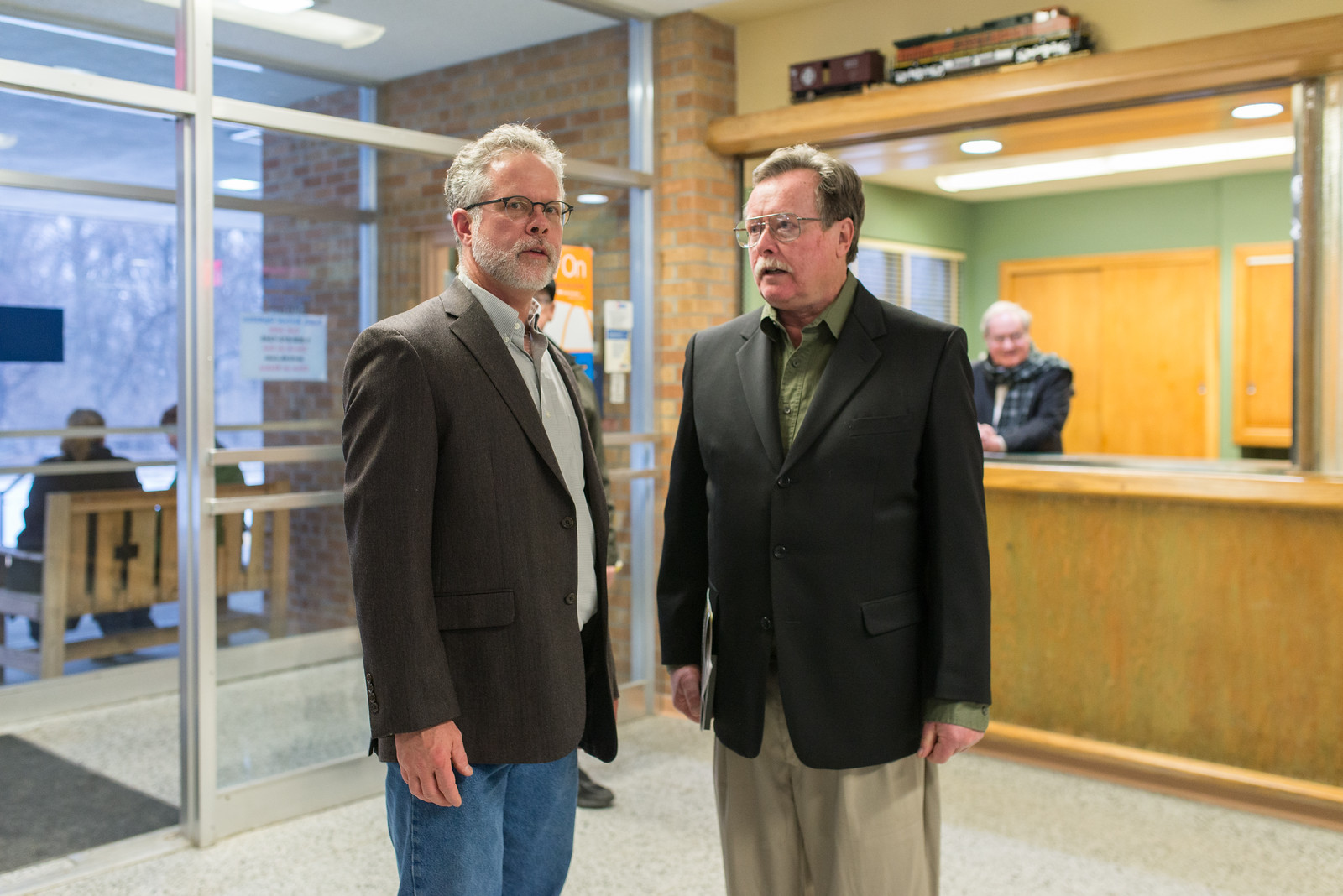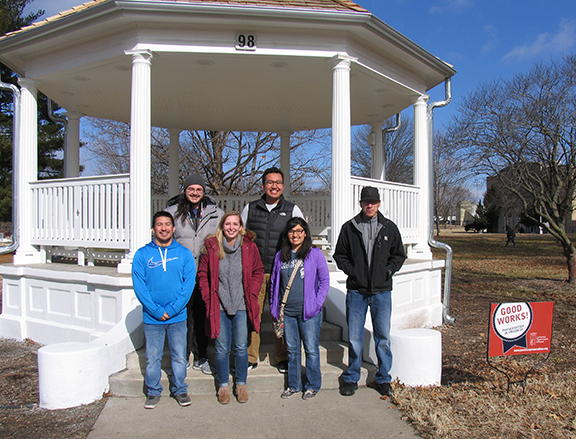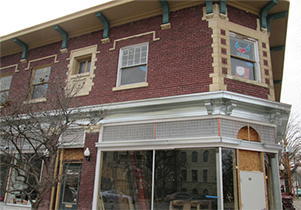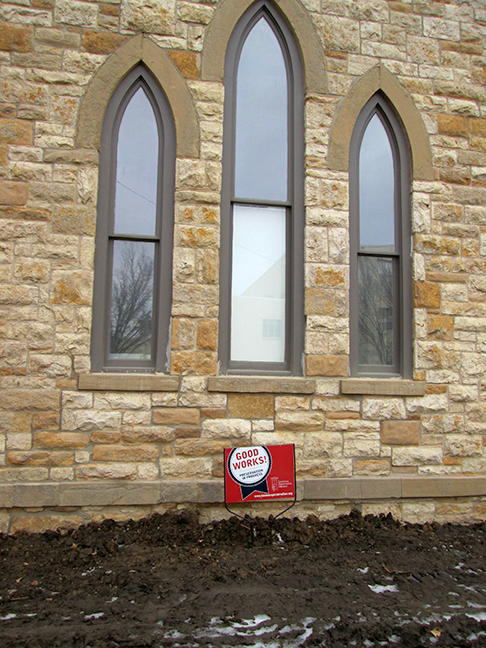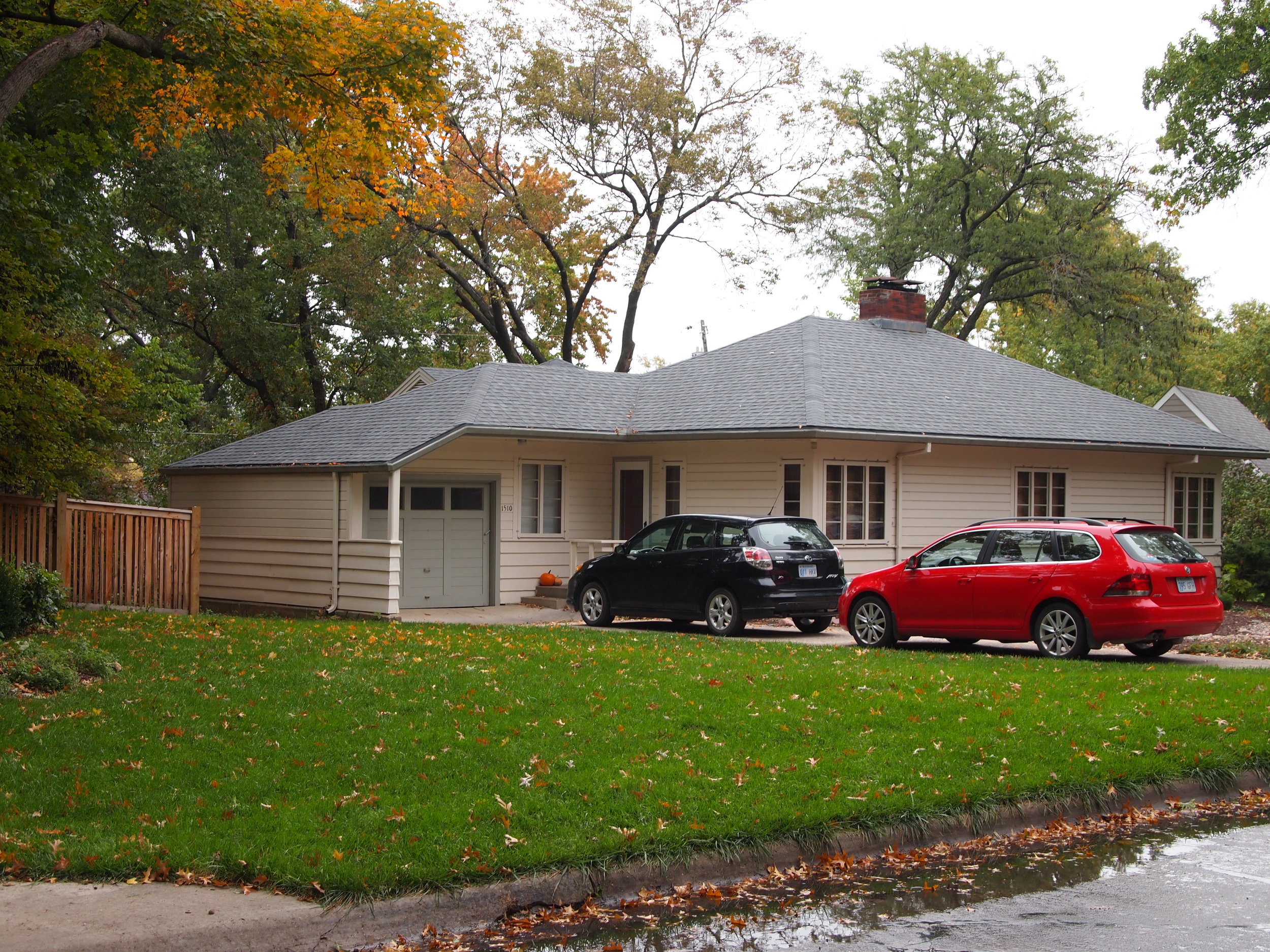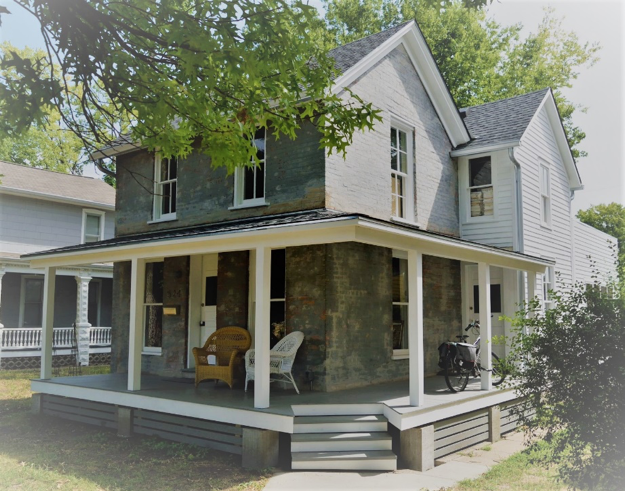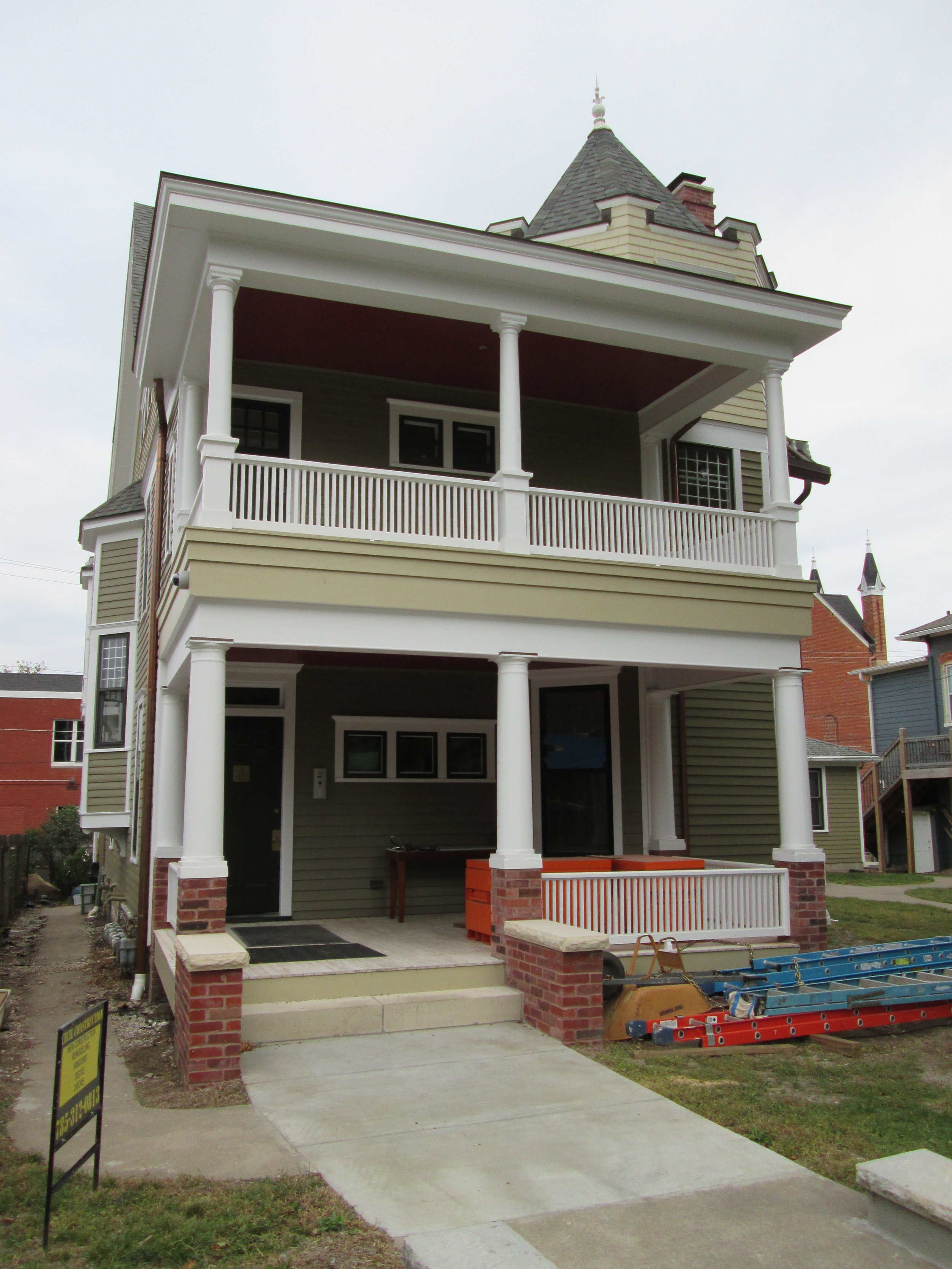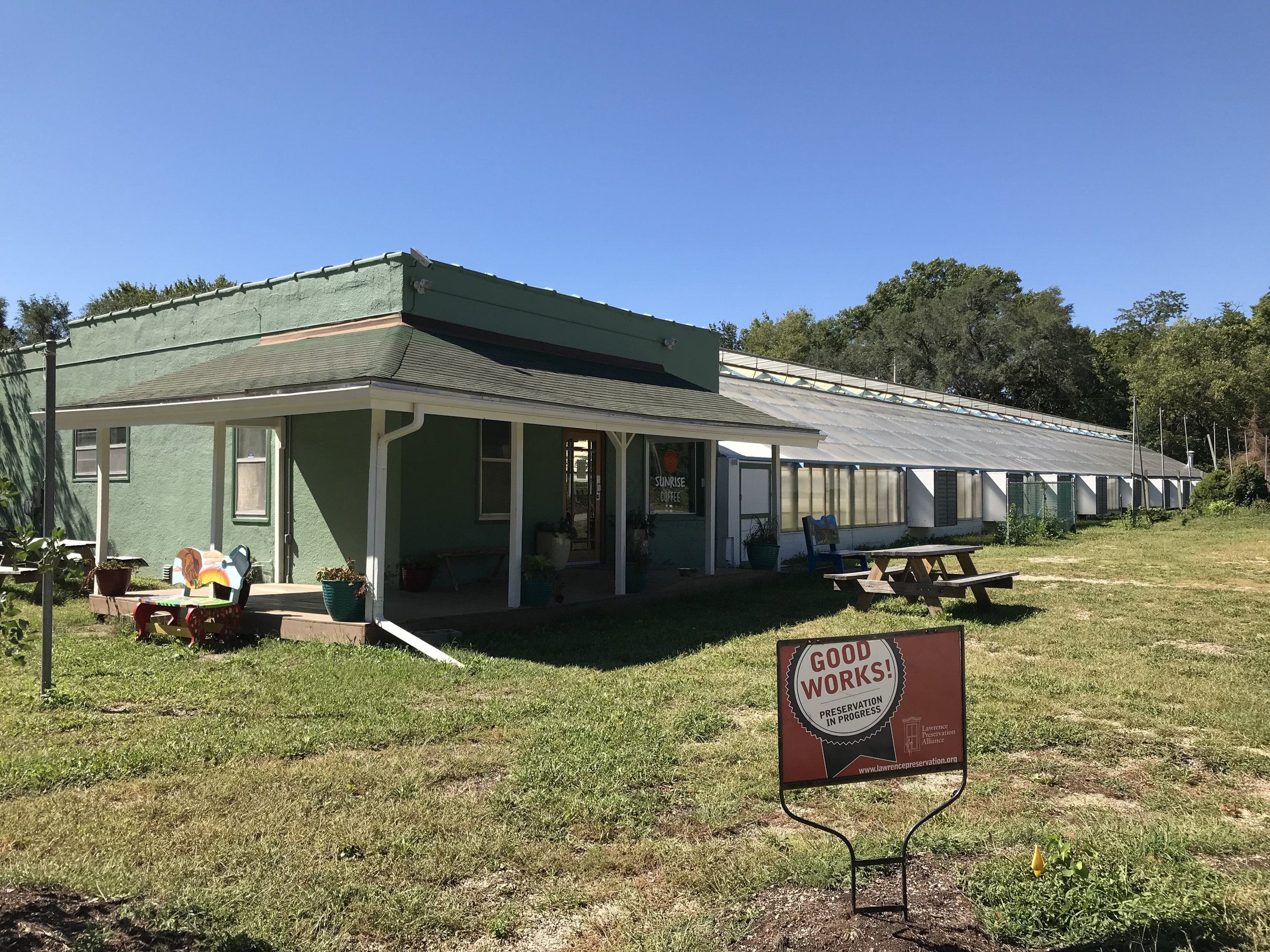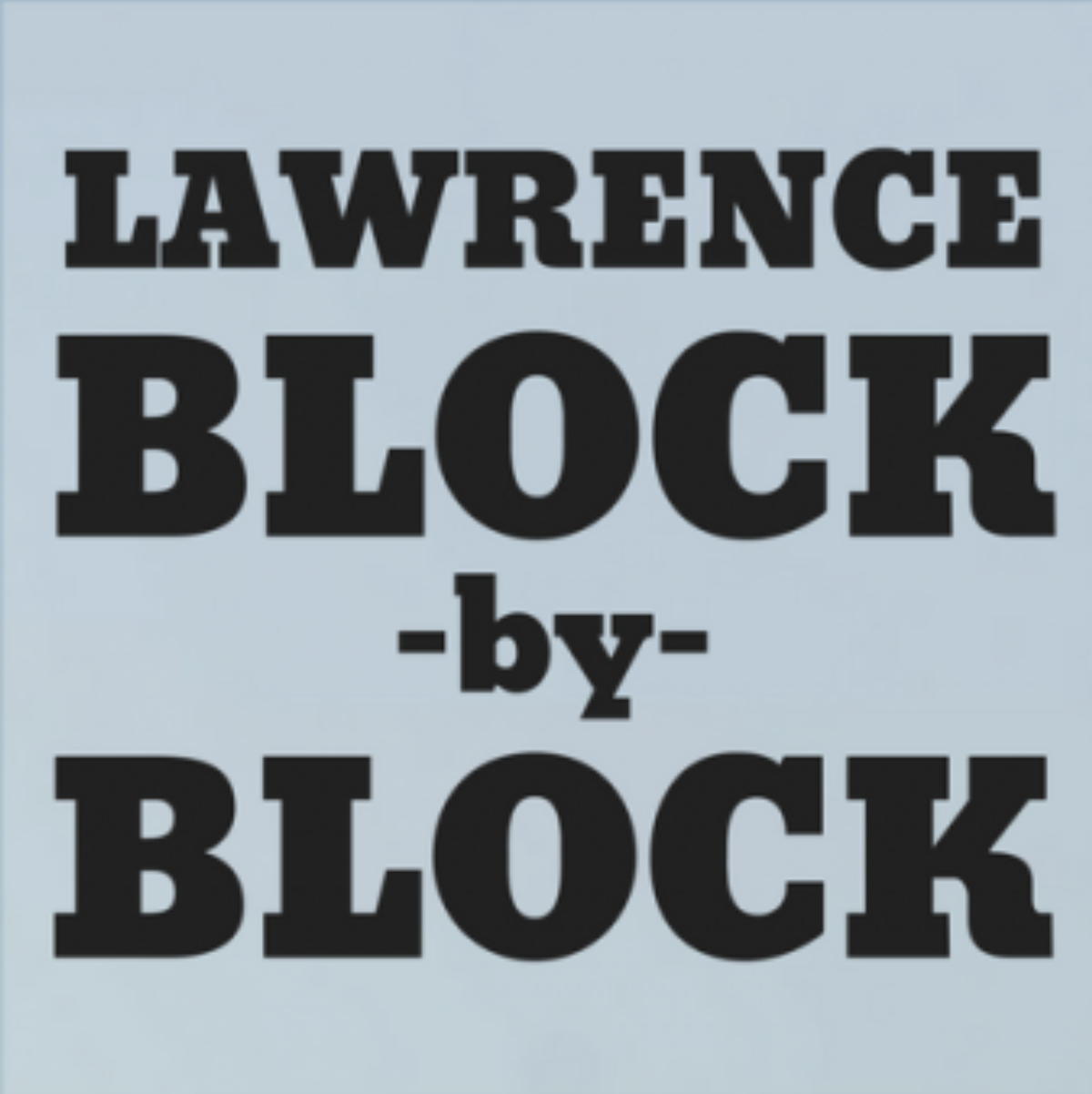Large Crowd Celebrates Rededication of Historic Santa Fe Depot
/The renovated Santa Fe Depot. Photo by Leilani Photographs
More than 100 people crowded into the Santa Fe Depot on February 22 as the historic midcentury building was rededicated after an extensive renovation project. The renovation of the depot, after years of neglect, is one of the greatest midcentury preservation efforts in Kansas and Lawrence.
Architect Warren Corman, one of the original designers of the depot, regaled the crowd with stories about its creation. Photo by Leilani Photographs
A highlight of the afternoon was a speech by one of the depot’s original architect’s, Warren Corman, who entertained attendees with stories of the building’s creation in the mid-1950s.
Part of the crowd that celebrated the rededication of the depot. Photo by Leilani Photographs
Other speakers at the event included representatives of the groups who made the renovation project possible, including Depot Redux, the non-profit advocacy group founded by Carey Maynard-Moody; Lawrence Modern; Burlington Northern Santa Fe Railway; Amtrak; Lawrence city officials; and Lawrence Preservation Alliance.
This diverse coalition of groups worked for many years for the city to take over ownership of the building and for the depot to be listed on the National, Kansas and Lawrence Historic Registers. That in turn facilitated a Transportation Enhancement grant administered by the Kansas Department of Transportation and matching funds from the city to fund the extensive renovation.
The building now looks very similar to what it looked like when it opened in 1956, augmented by new geothermal HVAC, new electrical, plumbing and a new roof. There is fresh paint and new aluminum fascia wrapped around the various roof elevations. The bathrooms, entrances, walkways and platform now meet Americans with Disabilities guidelines. The operable windows have interior storm windows and screens that blend seamlessly with the north and south walls.
First Management Construction was in charge of the renovation and Stan Hernly of Hernly Associates Inc. was the architect who made sure the renovation adhered to historic guidelines.
Tom Harper, president of Lawrence Modern, and Dennis Brown, president of LPA, at the ceremony. Photo by Leilani Photographs
Diane Stoddard, Lawrence’s assistant city manager, provided the leadership and determination for the depot ownership to be transferred to the city. Without Diane, the depot still would be owned by Burlington Northern Santa Fe and falling into a worse state. LPA presented Depot Redux and Stoddard with Preservation Achievement Awards in 2017 for their work preserving the depot.
We are happy and grateful to all of the citizens of Lawrence who were involved with this successful preservation effort and look forward to many more years of the depot being a Lawrence landmark and serving as a regular stop for Amtrak passenger trains.



